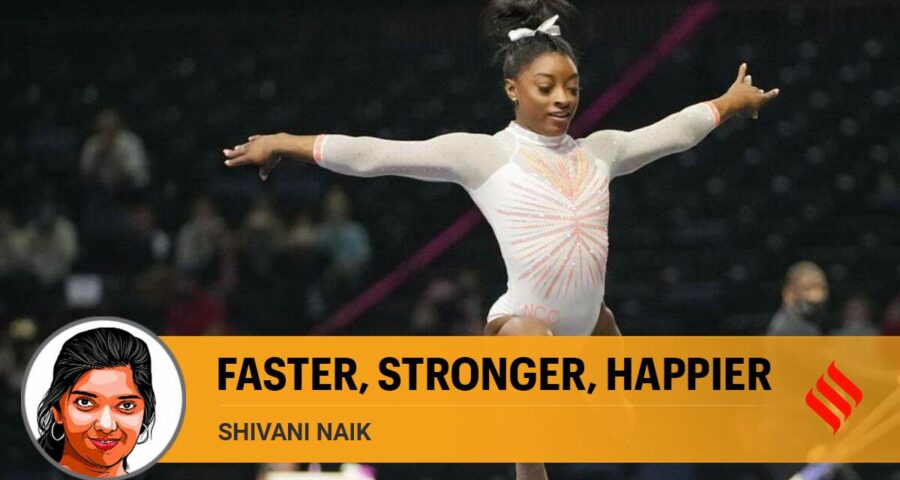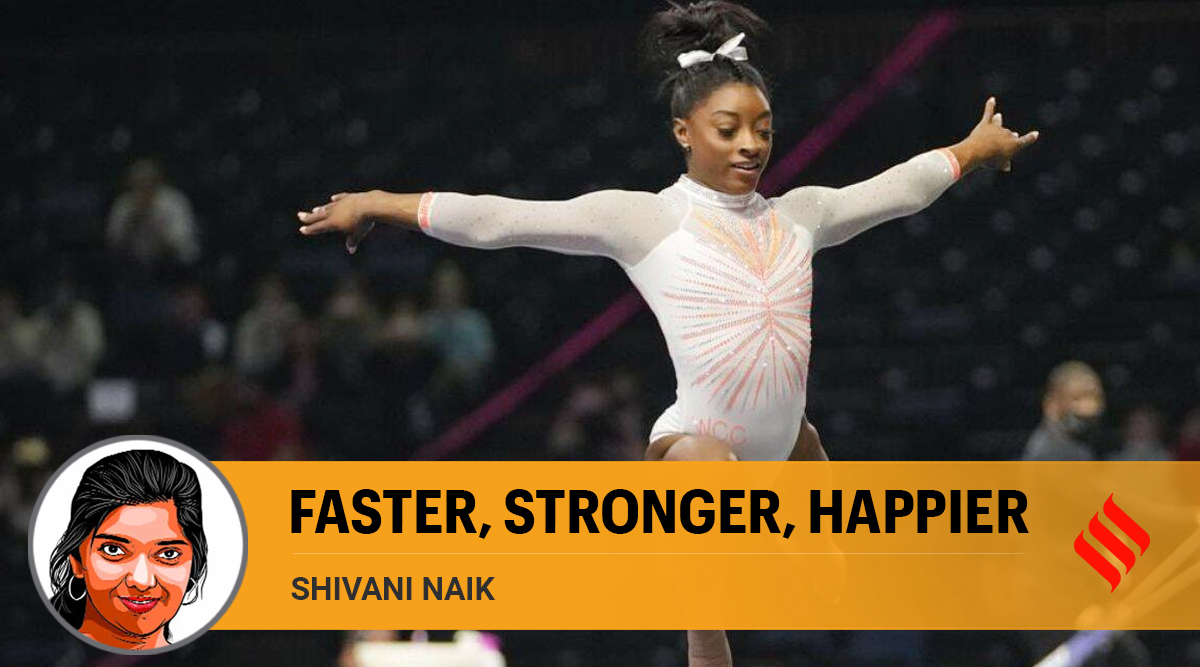Shivani Naik writes: Gymnastics has gone on far too long without allowing its practitioners to decide if they feel comfortable with the risks they are undertaking
The kids were always alright, doing their cartwheels and tumbles. It was the adults who needed to grow out of their blinkered idea of what sport ought to signify. In their world of pirouettes-to-Olympic-podiums, gymnastics was glorified for its pursuit of inordinate repetitions, so that once every four years, the world could applaud a perfect performance.
Simone Biles knew this drill. She even aced it, with six medals — four golds — at the Rio Olympics. Her Olympic success preceded the darkest realisations of her life: That a team doctor she and her teammates should have been able to trust blindly had sexually abused them when they had been either too young or too naive to know. The American gymnast knew her broken toes could heal but becoming the face of gymnastics’ biggest-known scandal could leave triggers for a lifetime. Authorities did their belated bandage work, but no one dared tell Larry Nassar’s victims that they were on a deadline to recover mentally.
Biles, in the meantime, moved to Texas under a nurturing coaching couple, dropped sponsors she didn’t share values with, and at her unique breakneck pace, developed some stunningly difficult eponymous elements for her routines on the vault, beam and floor.
Landing in Tokyo, a yip on her opening vault — a temporary blanking out — and a stutter off-bounds would fetch her a top score even without attempting the Yurchenko double pike. But it rang sufficient alarm bells in her to not risk anything more. She made way for the rest of the team in the all-around competition, from which the US drew a silver. She prioritised her mental health over every other rationale that pushed her to compete.
Gymnastics has gone on too long without allowing its practitioners to decide if they feel comfortable with the risks they are taking. This is mostly because gymnasts start young, aim at teenage world dominance, have parents and coaches take the biggest calls on their lives and are so conditioned to flirt with the danger dangled at them from behind a shiny medal that consent never enters the equation.
Entire countries have lumped their expectations on the shoulders of young female gymnasts and sent them into battle after years of cruel prep. Many in the western world should alight from their high horses, as it wasn’t merely the Iron Curtain countries and China or Japan which had generations scarred by bullying, hitting, body shaming and toxic internal competition. Biles’s greatest deed of the Tokyo Olympics might well be giving courage to former gymnasts to talk about their former lives. In the 1996 Atlanta Olympics, American Dominique Moceanu hit her head on the beam and was expected to take off on her floor routine minutes later in service to the “team” (read: country). She would liken it to diving in a pool without water. Kathleen Johnson Clarke, one of USA’s earliest international medallists, talked about the 1979 World Championships, where six weeks after surgery, she felt iffy post warmups and was scratched from the team, but faced backlash for “feigning illness”. It shattered her spirit.
Over the course of two seasons, Biles has questioned aspects of gymnastics that leave athletes vulnerable. She did this as a Black athlete from the US, as a leader of a diverse team coming out of the Nassar years and as a GOAT gymnast who had much at stake, and plenty to gain by merely keeping shut.
Increasingly, young women from across the world will refuse to be slaves to an erstwhile idea of success. Even China, with a millennial generation that is influenced by the Tang Ping movement that promotes going easy on the rat race, might not be far behind. They have Naomi Osaka and Biles to emulate.
Both sports and country must now learn to appreciate the stop-start staccato of young champions who won’t live by the old diktats. Biles reckons athletes ought to join the rest of the world in enjoying sport. The gymnasts’ medal-winning smiles from behind the mask can then finally reach their eyes.
This column first appeared in the print edition on July 30, 2021 under the title ‘Faster, stronger, happier’. Write to the author at [email protected].
Source: Read Full Article



